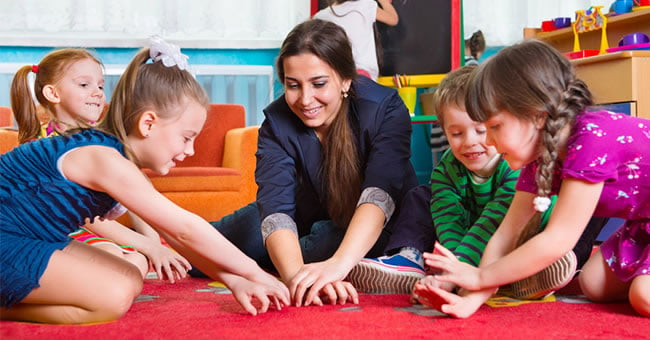
Trust and respect are two important components of the classroom learning environment. If a student doesn't respect and trust his or her teacher or if a teacher isn't respectful of students and their families, the learning environment won't be as nurturing and the teacher's classroom management strategy won't be as effective. A lack of trust and respect will also cause children to feel unsafe and uncomfortable in the classroom, which may lead to children having behavioral problems.
Some people may think that trust and respect in educational environments should be a given, but educators need to realize that they will have to work to develop trust and nourish respect in the classroom. As William DeMeo, PhD, explains in When Nothing Else Works, children in today's world are often mistrusting due to society's messages of the world being a dangerous place and/or due to their own direct experiences with abuse, violence, and neglect.
It takes time to develop trust and respect in the classroom, but knowing how to help facilitate the process will help make it happen. "Being consistent and nurturing are two of the most important qualities adults can offer to help a child develop trust," says Dr. DeMeo in When Nothing Else Works. The following tips on how to develop trust and nourish respect are also included:
Provide a Safe and Secure Environment
Ensuring that all of children's basic needs are met and providing a safe and secure environment that enables children to explore and participate in active learning can help trust and respect develop and flourish in the classroom. Start by creating a child-based environment that features developmentally appropriate materials, activities, and techniques.
Encourage Positive Relationships
"Positive relationships in the classroom are in many ways prerequisites for effective learning and behavior," Dr. DeMeo states. Positive relationships also have an impact on children's resilience and can help protect them from violence, drug and alcohol abuse, mental illness, and failure. Focus on improving the environment or the relationships in the classroom to make relationships more positive.
Support Positive Interactions
Remember that all interactions with students are opportunities to strengthen the teacher-student relationship. To help foster a positive environment, Dr. DeMeo and other experts suggest three to five positive interactions for every negative interaction in the classroom. One way to start supporting more positive interactions is to evaluate the trust and respect in the classroom. Can children trust the other children and adults in the room? Does everyone work well together?
Trust Activities
The teacher-student relationship is important, but the relationships children have with other children in the classroom will also impact trust and respect in the classroom. Including trust activities in lesson plans is a great way to help students develop trust in their teacher and classmates. Falling backward, sculpturing, and mirroring are three examples of trust activities children will enjoy completing.
Another way teachers can help develop trust and nourish respect in the classroom is by getting to know students and their families. Students come from a variety of backgrounds and cultures, and making an effort to understand each child and his or her family will help foster trust, respect, and family engagement.
